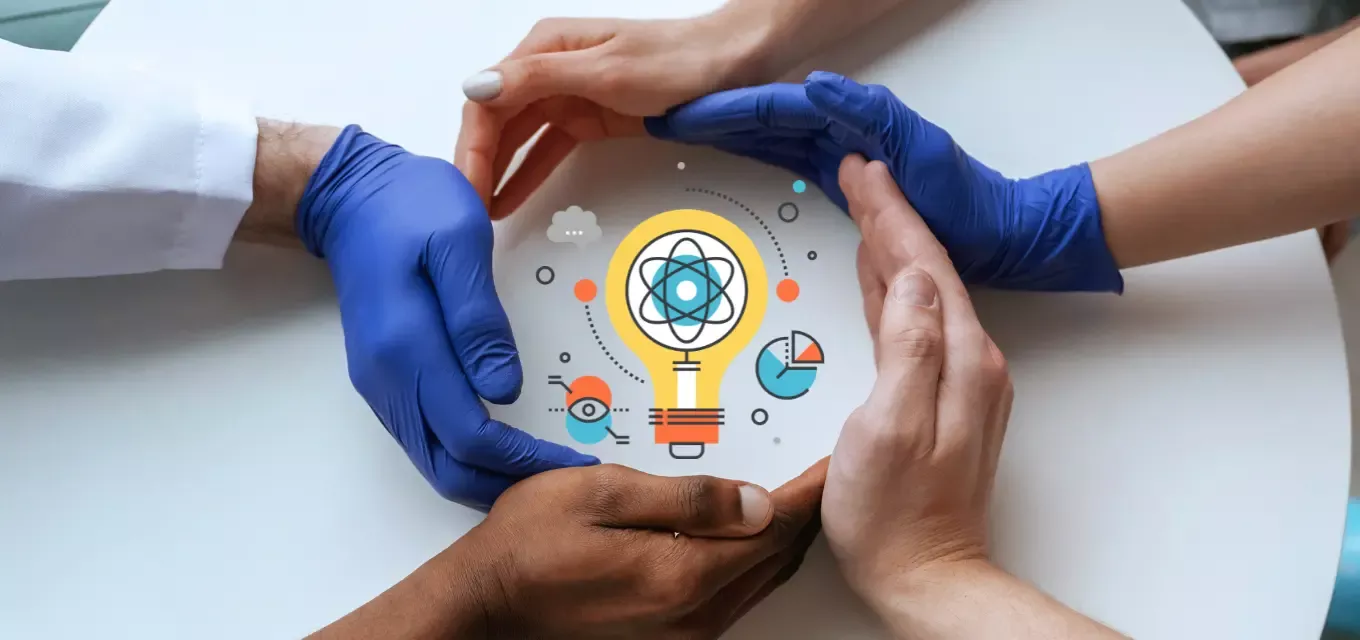The Impact of Software Platforms on CRO and Biopharma Partnerships | Revvity Signals Software
No one has discovered a pill that can eliminate the pain of collaboration between sponsors and CRO contractors. However, Signals Synergy software comes close, lightening the burden, streamlining workflows, and reducing errors — overall providing distributed teams a simpler, more efficient way to communicate and make progress against drug discovery goals.
The partnership between sponsors and CROs (contract research organizations) plays a crucial role in today’s dynamic world of biopharma. This relationship has evolved over time, bringing significant benefits to the industry. However, it is not without its challenges. By understanding the historical context and addressing the sources of discomfort, we can explore effective strategies and software solutions to optimize these essential collaborations.
The History of an Evolving Relationship and its Benefits
The relationship between contract research organizations (CROs) and biopharma companies has undergone significant transformation since its inception. It began in the 1940s with companies like Huntingdon Life Sciences and Charles River Laboratories providing clinical research. The modern CRO industry only started to take shape in the late 1970s and early 1980s with the 2000s seeing more offerings in drug discovery.
The 1980s were a landmark era with the introduction of blockbuster drugs such as the first statin and the first Selective Serotonin Reuptake Inhibitor (SSRI), Prozac. This period was both exciting and tumultuous, as the skyrocketing costs of drug development created a substantial opportunity for CROs to expand their services. The demand for CRO services has since grown dramatically, with their market share rising from 4% in the early 1990s to almost 50% by the mid-2000s.
The demand continues to grow and grow. According to Statista, as of 2023, the global CRO market is estimated to be approximately $77 billion with a projected growth to $127 billion by 2028. While the overall market grew, there was a significant shift in sponsor focus to discovery CROs and new drug modalities, reflecting biopharmaceutical sponsors evolving priorities. Signals Synergy specifically focuses on partnering with Drug Discovery CROs
The fact that most sponsors outsource a substantial portion of their research testifies to the significant benefits of access to specialized expertise — sometimes leading to use of multiple CROs — as well as increased efficiency and cost savings.
Sponsors are also turning to ‘techbio’ organizations that apply the latest digital technologies such as AI and machine learning to advance drug discovery goals. These firms leverage new techniques like predictive modelling and proteomics, using data and automation to their advantage in various research phases.
By leveraging CROs’ expertise and global capabilities, sponsors can accelerate project timelines, reduce in-house investment and maintain focus on their own core competencies. CROs help sponsors drive innovation, which grows their pipeline of drug candidates.
Collaboration Challenges
Chief among the collaboration challenges is effective communication. How efficiently teams plan, communicate and work in sync can make or break a timeline and lead to challenging project management, particularly when multiple CROs are engaged and may be working in different time zones.
Many sponsors will be familiar with these common communication and project management issues:
Managing Projects through Email and Spreadsheets
1. Inconsistent Spreadsheet Formats
- Each CRO uses its own format for result spreadsheets, requiring custom coding and extensive data wrangling to standardize the data for analysis. While this may not pose a significant issue for large pharma companies with ample resources, it is challenging for biotech organizations with lean staff and potentially limited data science expertise.
- Similar challenges arise with downstream analytics. There needs to be standardization and integration of external data all through the project to avoid these challenges.
2. Data entry errors
- About 25% of spreadsheets need to be returned and reworked due to errors in data entry.
3. Project Tracking Difficulties
- Sponsors often lose track of the project status because of the challenges and inefficiencies of managing projects through email.
- Emails also complicate prioritizing and communicating work tasks.
- Tracking the stages of out-sourced projects through emails is unreliable.
High Rate of CRO Turnover
High turnover rates present a huge collaborative burden. The process of on- and off-boarding employees is time-consuming and costly. For the sponsor who may share IT solutions to facilitate sponsor and CRO data sharing, managing user accounts at the CRO can be time consuming and difficult to manage accurately.
Intellectual Property Protection
Preserving sponsors’ IP is paramount. However, accomplishing this without limiting relevant information needed to do drug discovery work is challenging.
Innovative Software for Seamless Sponsor/CRO Collaboration
Signals Synergy is a dedicated discovery informatics solution created specifically by Revvity Signals to address all the collaboration challenges of sponsor and contract partnerships.
"The project management capabilities that we built understand chemistry and biology, which aids in collaboration between the CROs and sponsors."
-Chris Stumpf, Director of Drug Discovery Informatics Solutions, Revvity Signals in an interview you can view here.
The software accelerates innovation in five key areas:
- Administration – By bringing the CRO into the Sponsors Synergy SaaS tenant, project initiation, user onboarding, and security setup are simplified and consistent.
- Drug Design – An ideation workspace for capturing drug designs and hypotheses eliminates email and attachment issues. All work is held within Signals Synergy and both the sponsor and CRO can view the data.
- Intellectual Property Protection – Built-in masking of proprietary codes, properties, and material IDs offer the protection necessary while sharing the information needed by the CRO for effective drug development.
- Project Management – Scientifically-minded, Kanban-style tools provide tracking by both parties.
- Data Exchange – Automated transformation of unstructured CRO, CMO, and CDMO reports into structured data ready for analytics, visualization and publication is a monumental time saver and manual error reducer.
Signals Synergy enhances collaboration and information exchange between CROs and sponsors. For sponsors already using Signals Notebook or Signals OneTM, adding Synergy software expands their capabilities in communication, planning and information exchange with fit-for-purpose collaboration tools. It can’t get much more accessible than that!.
If improving your collaboration, communication, project management and workflows with CROs is a need, contact us here with questions.

Chris Stumpf
Senior Principal Marketing Professional, Revvity Signals Software, Inc.Chris Stumpf is a Senior Principal Marketing Professional responsible for Marketing Programs at Revvity Signals Software, Inc. Chris has over 20 years of experience in the Analytical Instrumentation and Informatics industry spanning Pharmaceuticals & Life Sciences to Chemicals & Materials. He has a Ph.D. in Analytical Chemistry and Mass Spectrometry from Purdue University.
